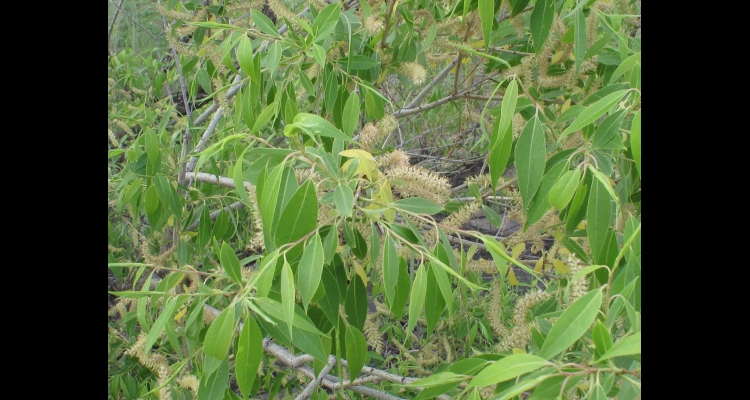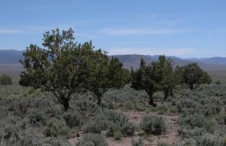Coyote Willow
The Coyote Willow (scientific name Salix exigua) is a hearty tree commonly found throughout Nevada and is also known as Sandbar Willow. It has been used for many years by the Great Basin Indians, specifically the Washoe, Paiute, and Shoshone. It was extremely important as a part of their culture for both material goods and medicinal uses.
Willow was used to make items such as baskets, cradleboards, bows and arrows, fish traps and rope by Indians. Most of a family’s household goods were made using willow. The most complicated structure made by the Great Basin Indians was the willow-frame house covered either with mats of cattails or tules, or with long fringes woven of grass.
It was also widely used medicinally, in the form of tea, mashed roots, or powdered bark to treat ailments from toothaches and dysentery to dandruff. Willows produce a compound known as salicin, related to what we know as aspirin, which is most likely the reason for its abundant use by the Indians of the Great Basin.
This species grows in meadow areas in and around the sagebrush steppe. The scientific name, Salix exigua, is thought to be derived from two Celtic words, sal (near) and lis (water). The Coyote Willow, a deciduous tree, usually grows in groups in river banks, or marshy areas and most often forms dense thickets. This species is the only willow found in the lowest and hottest portions of our deserts, and roots easily from cuttings or where broken branches lie on the ground.
The Coyote Willow has slender, straight branches that can be up to several meters in length, very useful in the making of various tools and cultural items. It has a silvery-green leaf, which is smaller than all other willows, due to climatic adaptation. In fact, the species name exigua means small, specific reference to its adapted leaves.
This willow can grow up to 16 feet tall, and together with its silvery leaves and compacted nature, it provides the perfect hiding place for coyotes in the region, thus the name.
Article Locations
Related Articles
Further Reading
None at this time.



